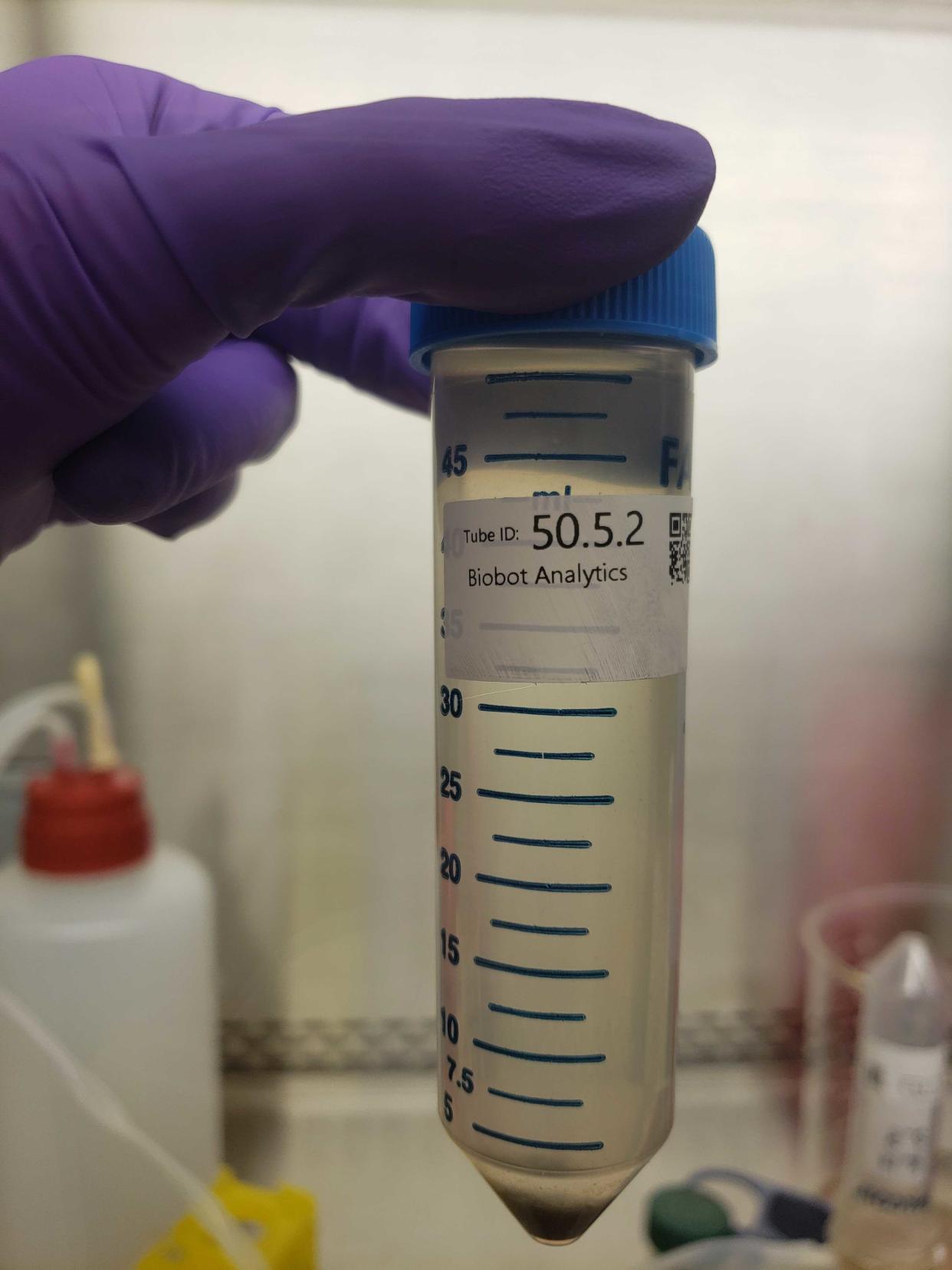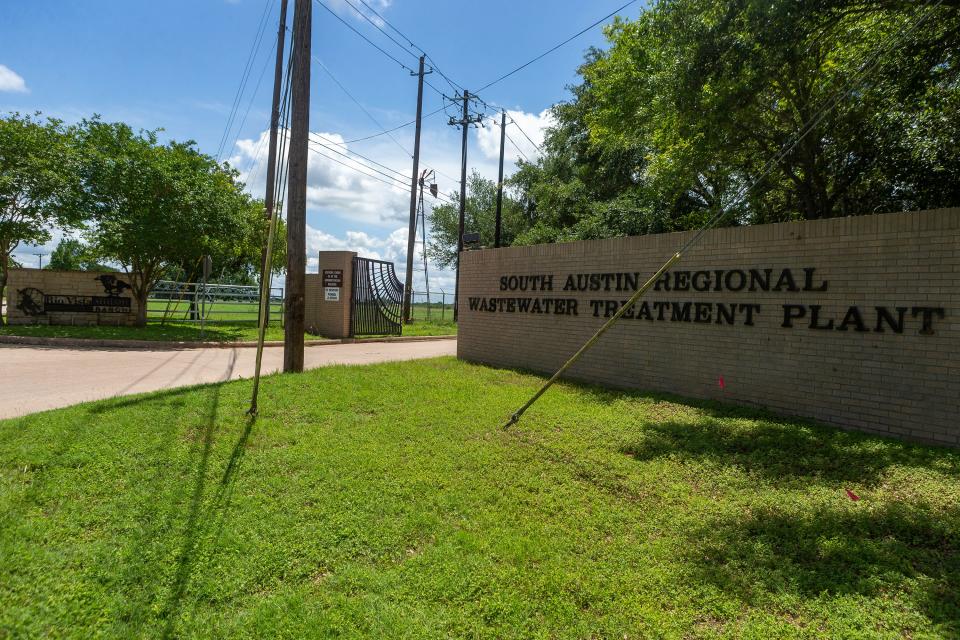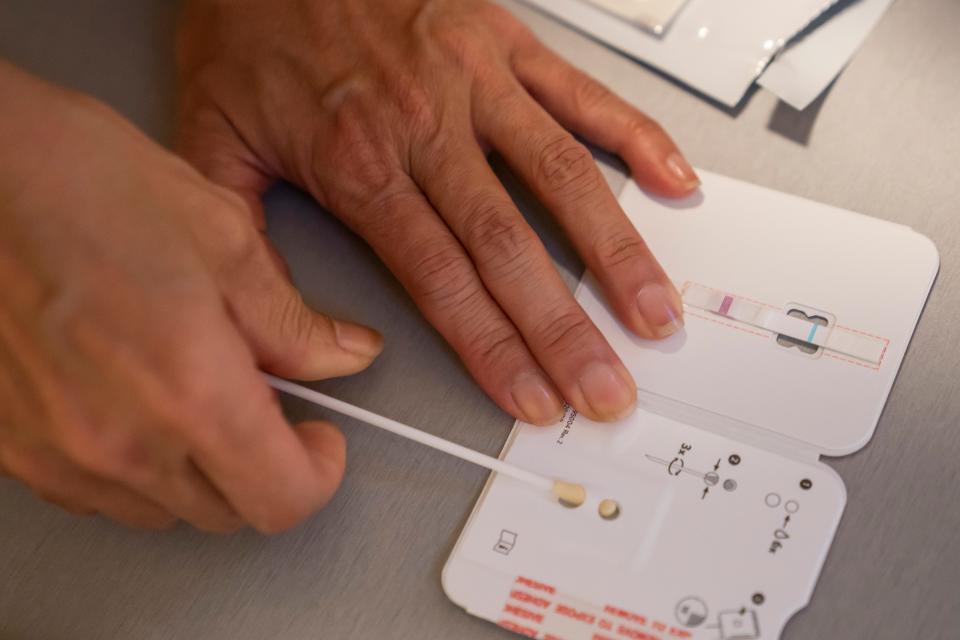How bad is COVID-19 in Austin? Do we have the new strain? Here's why we don't know

Austin Public Health has begun testing wastewater samples for COVID-19 again after almost a one-month gap because the agency did not have water sample kits, the chief epidemiologist said.
Austin Public Health ran out of the kits from Biobot, the Centers for Disease Control contractor that sells them to cities, said Janet Pichette, the chief epidemiologist at Austin Public Health. Biobot did not respond to questions about why kits were not available in August.
Wastewater surveillance is a critical health safety measure to determine the spread of COVID-19. Austin Public Health last posted results July 26, and they ndicated that the levels of COVID-19 in the water had been rising since mid-June.
Now there is concern about new variants being seen elsewhere in the United States, but without the wastewater surveillance, Austin Public Health does not know if those variants are here yet.
Austin Water needs the kits to collect the wastewater at both the Walnut Creek Wastewater Treatment Plant and the South Austin Regional Wastewater Treatment Plant. Those two plants cover about 95% of Austin, said Janet Pichette, the chief epidemiologist at Austin Public Health.
After the water is collected by Austin Water and sent off to be tested, Austin Public Health usually receives a report in about a week about the amount of COVID-19 found in the water and what strains were detected. People shed COVID-19 in their excrement, and it makes its way into the wastewater through our toilets and sewers.
Austin's wasn't the only public health department affected by the lack of kits, Pichette said. On the CDC wastewater surveillance map, many dots are gray, indicating that there is no recent data for those collection sites. In Texas, the Houston area, a few spots around Dallas and two spots around Laredo are showing virus levels of 60% to 79%. One area in Conroe is above 80%. The other sites are all grayed out.
“Positive cases of COVID-19 continue to be identified, especially in areas where people gather," Austin Public Health Director Adrienne Sturrup said earlier in the month after seeing that data.
Then Austin Public Health lost its ability to check the water, just as cases were rising.

"We feel stripped, not having information," Pichette said.
The good news: New sample kits have been received, and Austin Water tested its two locations Aug. 24. Austin Public Health is eagerly awaiting the results.

What important information can wastewater surveillance give us?
Much of the previous information the public and Austin Public Health received has stopped. The state database that showed regionally the number of patients in the hospital with COVID-19 and the number of available regular, pediatric and intensive care unit hospital beds available in a region hasn't been updated since May, when the COVID-19 public health emergency ended.
More and more people are taking at-home COVID-19 tests, rather than being tested in a clinic or pharmacy. People can log the results of the at-home tests on a form on the Austin Public Health website, but most don't. Clinics, pharmacies and hospitals still report cases to Austin Public Health.
The wastewater surveillance has been a key way to see how much COVID-19 is spreading in the community and which strains are appearing. The CDC's risk level, based on case numbers, hospitalizations and available hospital beds, remains low across Central Texas counties.
What results are expected from the new wastewater testing?
"I'm anticipating we're going to see increasing numbers of people shedding that viral load," she said.
Pichette expects it will be like other years, with a rise in cases in the summer, which happened, and another rise a few weeks after the start of school.
On the tests that do get logged, Pichette is starting to see an increase in cases since school began.
The wastewater tests also will tell Austin Public Health whether we have two new strains of COVID-19:
EG.5, also called eris, has become the dominant strain in the U.S., according to the CDC, but we don't know whether we have it here. Pichette thinks we do because surrounding areas of Texas have it. It is related to previous omicron strains and isn't causing any more severity of disease, but it might be more transmissible.
BA.2.86, the new COVID-19 strain, found in Denmark, Israel, South Africa and the United Kingdom, has had two recorded cases in the U.S., according to the CDC. This strain has been picked up in wastewater nationally.
BA.2.86 is different genetically from omicron variants, which might make it easier to spread among people who have been vaccinated or have had previous infections, but it is too early to tell, according to the CDC.

What should you do about COVID-19?
The recommendations remain the same:
Test if you are sick, even if you think it could be allergies.
Stay home and isolate if you have a fever or test positive.
Wear a mask in a crowded place if you are immune-compromised, have been exposed or feel more comfortable doing so.
Wash your hands frequently.
Get caught up on your COVID-19 vaccinations including a booster.
When will the new booster shots be available?
The CDC's Advisory Committee on Immunization Practices will meet next Tuesday.
"We've been on standby to see what recommendations are," Pichette said, adding that it could be a new booster for everyone or for people based on age or immune system.
Will we have the fall triple epidemic like last year?
Last year, pediatric hospital beds in Austin were full because of waves of COVID-19, flu and respiratory syncytial virus that hit at the same time. Flu, in particular, came earlier than expected.
The good news: Flu shots are now available, and people ages 6 months or older should get them before Halloween.
RSV vaccines are also available for the first time for pregnant women and parents or guardians of an infant younger than 8 months. Infants born during or starting their first RSV season (fall to spring) can get the RSV vaccine. Children 8 to 19 months who are at risk for severe disease can be vaccinated for their second RSV season.
This article originally appeared on Austin American-Statesman: COVID wastewater surveillance in Austin: Do we have the new strain?

